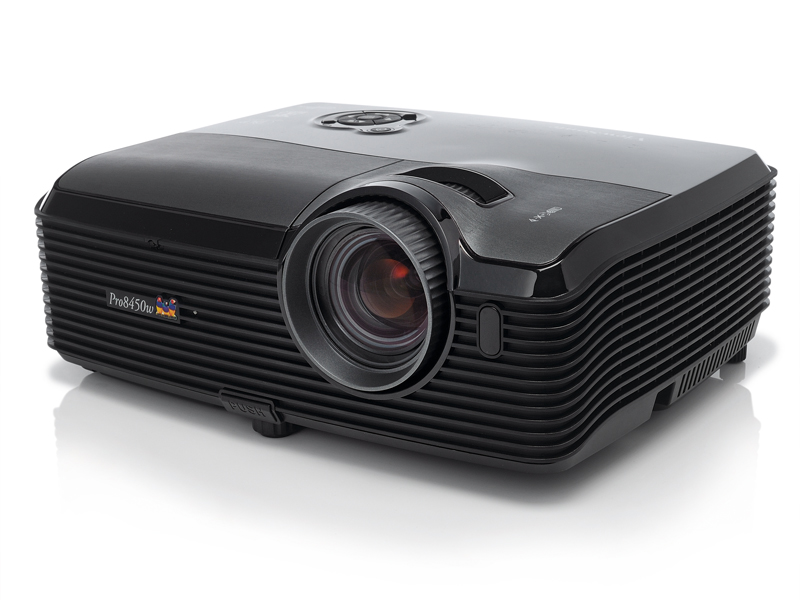TechRadar Verdict
Pros
- +
Good image quality
- +
Connections
- +
3D compatible
Cons
- -
No 3D processor included
- -
A bit noisy
- -
4500 Lumens might be too bright for normal home cinema use
Why you can trust TechRadar
One of the biggest draws of the new breed of 3D technology is also one of its biggest drawbacks: choice. Do you go for passive 3D TVs that just need plastic 3D glasses like those at the cinema, or do you opt for a TV that uses the more costly active shutter glasses? If you go for active, which brand do you choose? If you have Sony glasses, will they work if you switch to a Panasonic TV in the future?
While the absence of any industry standard for 3D means there's plenty of choice out there for us consumers – on paper at least, we get to pick and choose the hardware that suits our needs – it has resulted in a lot of bespoke standards arising that are incompatible with each other.
While 3D TVs are slowly becoming more accepted in our living rooms, another alternative is also starting to gain traction: the 3D projector. The ViewSonic PRO8450W demonstrates why this alternative to 3D TVs is getting so much attention.
At around £1,200 it isn't cheap, but considering the cost of large 3D TVs and the features the ViewSonic PRO8450W contains, it's not a bad deal at all.
This heavyweight projector certainly isn't lacking in inputs. Two VGA and two USB sockets, Ethernet, component and HDMI offer plenty of connectivity. The projector also has a built-in speaker, which is perfectly fine for presentations but no use for movies – you'll want an external speaker setup for the best media experience.
The ViewSonic PRO8450W also comes with a remote control, which is useful if you've mounted the projector on the ceiling.
Due to the heat emitted by the lamp, the device needs plenty of ventilation, which is provided by a large built-in fan. It isn't the quietest projector we've tested and we found that the whirring can prove distracting after a while. Of course, a decent home cinema sound system will all but drown out the noise, but in quiet, reflective scenes, the spinning of the fan could ruin your enjoyment.
Image quality
The most important consideration when buying a projector for movies and games is image quality. The ViewSonic PRO8450W's native resolution is 1,280 x 800 WXGA, allowing for resolutions up to 720p in 16:9 widescreen ratio. Our test Blu-rays looked very good, with fast moving action helped by the projector's 120Hz refresh rate and 2,000:1 contrast ratio.
The image brightness that the projector can achieve is a decent 4500 ANSI lumens, however this does result in a lot of ambient light being created from the image. This means that although you might be sitting in a darkened room to watch a movie, with the projector on and displaying images, the place will be lit up as if the lights were turned on. For most people this won't be too much of a problem, but for die-hard home theatre enthusiasts it could again prove distracting.
One of the biggest selling points of the ViewSonic PRO8450W is its 3D compatibility. As a 3D DLP projector it's not the best 3D experience you're going to get, but it does the job.
Don't think you can just unpack the projector, plug it into your PC or 3D Blu-ray player and begin watching in 3D – you're going to need some additional kit first. If your PC is already equipped with an Nvidia 3D Vision kit, which includes the transmitter and 3D glasses, then you're good to go.
If not then you might have to consider getting one for around £88 – and don't forget that you need an Nvidia graphics card. If you have an AMD card then you'll have to go down AMD's HD3D route. It's a more open ecosystem so you're not tied to any specific brands or standards, but it's quite new and isn't as widely supported as Nvidia's offering.
Optional extras
To watch 3D media via a Blu-ray player or PlayStation 3 you'll need the ViewSonic VP3D1 3D video processor, which sits between the source and the projector and allows the PRO8450W to display 3D images. It costs a not insubstantial £186. Oh, and you'll also need 3D glasses – why not the Viewsonic PGD-250s? A snip at £70 a pair.
Once again we're left with 3D's biggest downfall – its complexity and expense. The PRO8450W isn't an out of the box, plug-and-play 3D device – it's just a small, expensive piece in an elaborate puzzle, and the results fail to convince us its worth the trouble and expense.
Follow TechRadar Reviews on Twitter: http://twitter.com/techradarreview
